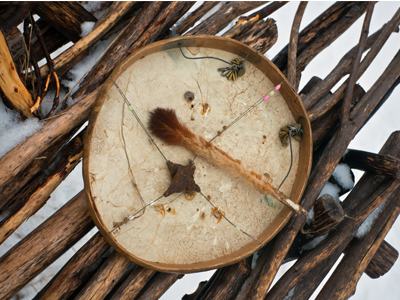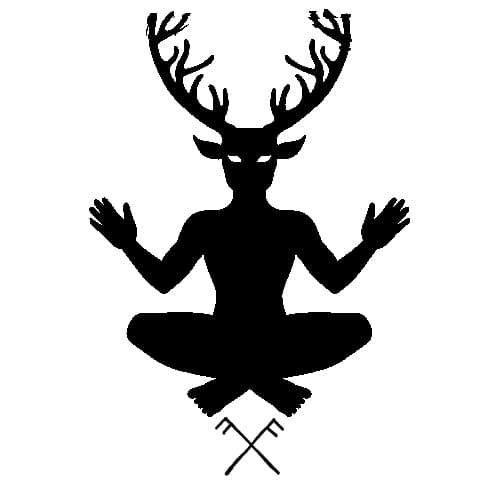When we study the various languages, the reconstruction of PIE-language and PIE-religion, we also come a bit closer to understanding the roots of what we would call “European Paganism” overall.
I am personally convinced, and that is my personal opinion, that many Myths that we today associate with “European Paganism” stem from the Neolithic and Bronze Age Period.
Traditions, rituals, spiritual practice – those things are inherited in traditional tribes and they are inherited via orally shared legends, myths and initiation rituals. For the Finno-Ugric countries such as Finland or Hungary, we need to look into the Proto-Uralic language from the Ural Mountains of Russia.
Luckily, there are still pagans alive today that do still hold on to their beliefs and native Paganism: The Mari people from the Mari El Republic and the Sami people of Fenno-Scandinavia. Unfortunately, we don’t have these kind of cultures anymore in most of Europe.

Almost all indigenous cultures around the world that have lived a hunter-gatherer way of life do have their very own medicine system that contains many different shamanic elements.
Singing, drumming, dancing, the use of sacred herbs, plants, incense, and an altered state of mind and consciousness combined with the contact with the shamanic Underworld: The world of spirits, ghosts, ancestors and gods. The biggest hurdle and issue for us is that we do not have written records.
The Paleolithic is when European hunter-gatherers lived a nomadic lifestyle, migrated into different parts, and this Period came to an end around 10 000 BC. We know today that both Neanderthals and modern Humans already buried their dead and gave them tools and other items with them into their graves. They also put rocks and stones onto the graves in order to protect their dead. Most research points to the fact that people during the Paleolithic did believe in an afterlife.
Then scholars came to find out that the people of the Paleolithic dug their dead out and this raised a number of questions: Was it an ancestral cult? Did they ask their dead Ancestors for deeds, did they try to contact and communicate with them? If so, then this points to what Anthropologists would call “shamanism”.
If we look at the famous Venus figures from the Upper Paleolithic Period, we can only speculate of what they could have meant. Many more were found in the Danube Valley in Austria, Siberia and also Spain. Some of these figures like the Willendorf Figurines were covered in Ochre – Ochre is sacred amongst many cultures, from the Aborigines of Australia to Native Americans that have used red ochre for example in burials in Alaska and Canada. Ochre is and was used for sacred rituals among indigenous cultures for a long time.
More studies conclude that these little figurines might be a depiction of a fertility cult or a Goddess. The most interesting part is that such figurines have been found not only from the Paleolithic period but also from the time inbetween the Neolithic and into the early Bronze Age. Many of these figurines were found near burials and some speculate that they could have been items that the dead took with them into the afterlife, or that they were gifts to a Goddess.
If we analyze and study European Upper Paleolithic Cave Art, there are many surprises. More studies come to the conclusion that even Neanderthals might have already practiced an early form of Animism and Totemism.
Animism is not a doctrine but the belief in an animated nature and Universe – everything is alive and has a soul. Large Ice Age animals might have been declared powerful and sacred.

The Trois Frères Cave in Ariège, France portrays images of half human, half animal composites. The famous “Shaman-Sorcerer” of the Cave is painted half human with many animal features and he is wearing wide antlers on his head.
Among the other depictions, we can see that animals like Bison played an important role and some speculate that this might have been indeed a ritual scene.
Animals like Bison, Mammals and also Bears might have played a role in "hunting rituals".
The Chauvet-Pont-d’Arc
Then the Bruniquel cave in southwestern France is what made many think that Neanderthals did practice an ancient worship of the Bear: A bear cult. We know for a fact that other cultures did indeed have a Bear cult. Inside the cave, one can see these ancient ring-like structures that were found inside Bruniquel Cave. The structures, made from pieces of stalagmites were likely built by Neanderthals around 176,000 years ago.
The Drachenloch Cave in the Alps of Switzerland holds similar mysteries. The Cave was excavated between 1917 and 1923 by Emil Bächler.
Inside the Cave, many bear skulls and bones where found and they have been placed in a specific order covered by a limestone slab. A bone that was placed into the eye socket of a Bear skull was found as well. Scholars still debate on whether or not Neanderthals did practice these kind of rituals and Bear worship.
In Italy there is another cave called the Basua Cave. The stalagmite inside might portray an animal, the many bear bones as well as the clay pellets scattered everywhere suggested the use of an ancient ritual inside the Cave. Of course, all of this is up to our modern interpretation and further archaeological evidence. But we do get inspired by these discoveries and leave it open to the reader.
The Qafzeh cave in northern Israel consists of ritual burial and grave goods including the use of red ochre and mollusk shells. The items found inside date back 120 000 years and show that modern Humans clearly practiced funerals and Ancestral worship for their Dead.
In traditional cultures we do find important hints for the shamanic powers of the Bear.
This might be unrelated to these Caves, but it underlines the importance of Ritual and the worship of sacred Animals among cultures that practice a type of shamanism.
I’d like to mention the Pacific North West Tlingit tribe who are known for their totemism and the worship of sacred animals. The bear is a powerful spirit of communication with the spirits, wisdom and wealth of knowledge.
You will find him on their sacred totems as well. In other North American tribes, he also teaches herbalism and the knowledge about sacred herbs and plants. The medicine bear sleeps in his den during the cold winter months, where he is taught about the sacred plants in his soul travels.
And when we awakens, he can teach us with his wealth of knowledge. Many similar tales about the Bear can be found among Mi’Kmaq people of Eastern Canada and northern Maine and the Dene people from the arctic regions of Canada. The bear knows the medicine and plants and is often heavily associated with shamans, sacred powers and wisdom.

Tribes such as the Algonkins from Canada and Tlingit in the Pacific Northwest did indeed have a bear cult. Some Tlingit people consider the Grizzly bear as their Ancestor.
Back in Russia, tribes from northern Siberia like the Selkup tribe who are also called Samoyedic, did worship the bear as well. The Selkup shamans dress up in deer and bear skin during their shamanic practice. They believe that the deer and bear will help them travel through their spiritual worlds, depending on what realm they need to travel to.
The bear is especially sacred to them and they believe that humans were once bears as well or that the bear does have a soul similar to that of us humans. This is common among many Siberian tribes. The bear teaches, he is a wealth of knowledge and in Siberia, he does have his own shamanic burial ceremonies. We see that shamanism seems to have very ancient roots. The sacredness of animals and their souls goes back to very ancient times. I must add that the modern interpretation of shamanism and the spirituality of indigenous cultures is, most importantly, a reflection of western mentality and culture. It does not and can not grasp the various rituals and worldviews in its entirety. Research can analyze cultures from the outside, but the worlds within remain as mysterious as the ancient landscapes, the forests, deserts and mountains that all of our Ancestors once upon a time lived in.




